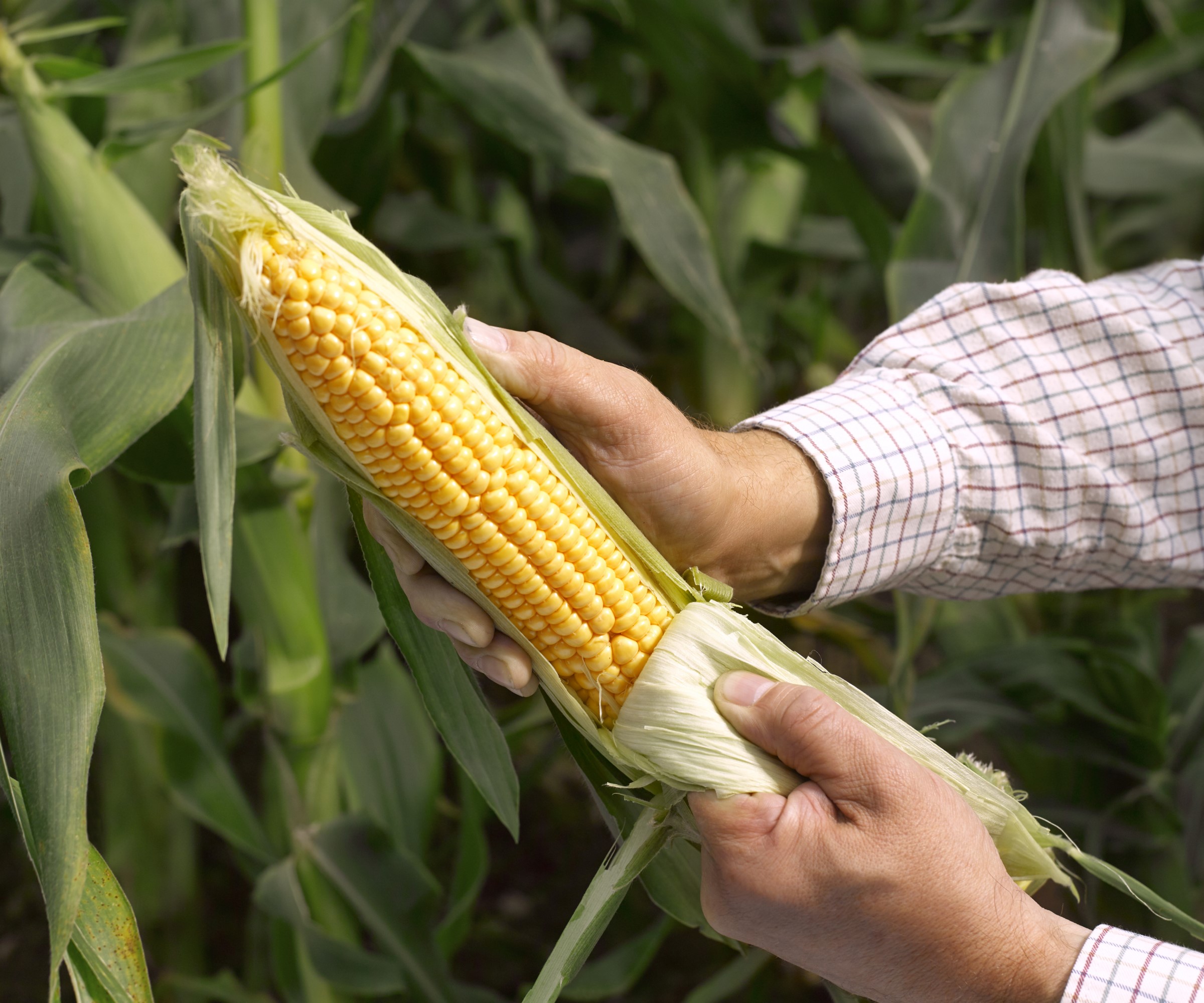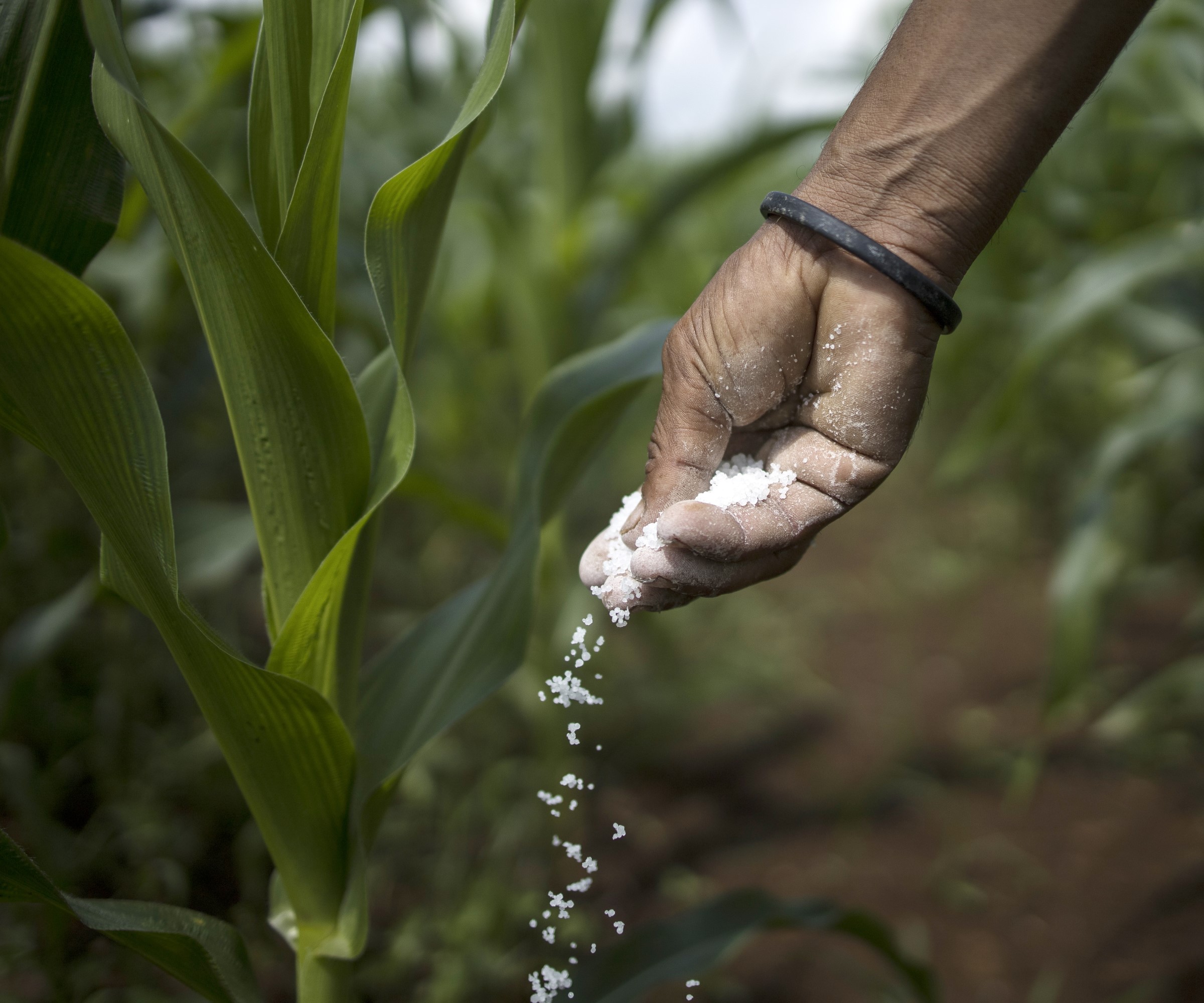How and when to fertilize corn – our experts reveal the ideal times to feed crops
How to choose the right fertilizer for the right time to get a great harvest


Corn is a crop that wants a lot of water and nutrients to grow strong and healthy and to provide a bumper harvest of juicy cobs. These popular and statuesque plants are simple to grow, yet you do need to feed them regularly.
They benefit in particular from rich soil and lots of nitrogen to help them grow, followed by more potassium once they get to the stage when they are developing cobs.
When you are growing corn it will require you to water and feed these crops regularly. We take a look at the best time when to fertilize corn and also how to choose the best feeds that will guarantee a great yield of corn for all your culinary needs.

It can take three months to go from sowing to harvesting corn
What stage is best to fertilize corn?
Before choosing the time to plant corn, it is best to test your soil to get an understanding of its soil type, pH, and nutrient levels. To grow the best crops you want your soil to be fertile and have a good mix of all the essential nutrients plants need to grow.
You can get soil test kits such as this Professional Soil Test Kit on Amazon and the results can help reveal any deficiencies that may need to be addressed.
The soil can be improved to benefit the corn before they are even planted. Adding a layer of compost or well-rotted manure in the fall before planting can help to provide nutrients and also increase the water-holding capacity of the soil. The mulching materials can either be mixed into the soil or laid on the surface like in no-dig gardening techniques, and the worms will help incorporate it into the dirt.
There are different growing stages in which corn benefits from feeding. When the plants are around four inches tall, they want a balanced fertilizer to give them a good start and all the nutrients to get them going.
Design expertise in your inbox – from inspiring decorating ideas and beautiful celebrity homes to practical gardening advice and shopping round-ups.
When the plants reach 10-12 inches tall, they can benefit from an extra dose of a high-nitrogen feed to help them put on quick and healthy foliage growth.
Bob Flowerdew, organic gardening expert for Homes and Gardens, explains how this application of feed should be timed correctly so the plants can take advantage of the extra nutrients when they need them most.
He advises: ‘Sweetcorn is a grass and so it loves nitrogen, especially in the early stages. However, applying too much once the cobs form will promote more vegetative growth rather than ripening the cobs.
‘Once the cobs form, there is less need for nitrogen feed, but be sure to make time for regular watering’
As mentioned by Bob, the second feeding phrase comes when the plants are producing cobs. Here the nutrient requirements change, from needing lots of nitrogen to put on vegetative growth to needing more potassium and phosphorus. These two nutrients are hugely beneficial for growing and ripening cobs and you reap the benefits of this feed when you harvest corn.
John Negus, a gardening expert for Homes & Gardens, warns that soil that continues to be ‘nitrogen rich’ will not stimulate ‘fruiting growth’. He adds: ‘Sweetcorn needs a high-potash feed to make kernels’.
He recommends ‘feeding twice weekly with a high-potash tomato fertilizer’ as that will ‘speed up the development’ of cobs.

Bob Flowerdew is the organic expert for Amateur Gardening magazine in the UK. Every week he writes about a wide range of gardening tasks and offers advice on how to create a sustainble, eco-friendly garden. He has also written a wide range of books on organic gardening methods.

John has been a garden journalist for over 50 years and regularly answers readers' questions in Amateur Gardening magazine. He has also written four books and has delivered many talks over the years on horticulture.

Granular fertilizers are applied to corn by side-dressing around plants
What kind of fertilizer do you use on corn?
It is important to understand the plant fertilizer numbers that you see on the labels of packaging. The three essential nutrients of nitrogen, phosphorus and potassium are referred to as NPK and their makeup in any fertilizer is shown by three numbers, ie. 10-10-10.
The first feeding stage, when the plants are a few inches tall, requires a more balanced fertilizer. This means it has a fairly level make-up of NPK and the numbers on the packaging will be balanced. A good example of an all-purpose balanced fertilizer to use is Jack's Classic All Purpose Plant Food available at Amazon and with an NPK make-up of 20-20-20.
Once the plants are established, the need then changes to a high-nitrogen fertilizer. Examples of fertilizers high in nitrogen include blood meal, urea, chicken manure pellets, or feather meal. The Natural Organic Blood Meal from Burpee has an NPK of 12-0-0 and is ideal for heavy feeders such as corn.
High-nitrogen fertilizers tend to come in granular form and are best applied by side-dressing, where you apply the fertilizer around four inches away from the stems in rows on either side of the plants. This slow-release fertilizer then needs to be watered in well after being applied.
To boost the production of corn kernels, look to use fertilizers that are intended for growing tomatoes as they are rich in phosphorus and potassium. Tomato fertilizers can either come in granular form or as liquid feeds, which are mixed with water and added to the soil at ground level when you come to water plants. The Espoma Organic Tomato-Tone Vegetable Food available at Walmart has an NPK of 3-4-6 and is a granular fertilizer that is high in potassium and ideal to help corn develop cobs.
FAQs
When is it too late to fertilize corn?
When the vegetative growth of the plant is near complete, it will start producing tassels at the top. This is what sheds pollen and then releases it to the wind to come into contact with the silk and ensure pollination. Any addition of a high-nitrogen fertilizer should stop once tasselling has taken place.
What does too much fertilizer do to corn?
You can over-fertilize plants and signs to watch out for include leaf discoloration, stunted growth, or excessive shedding of any foliage. There can be signs on the soil such as green algae, and adding too much nitrogen can lead to a smell of ammonia.
Adding too much feed will impact the yield, as over-fertilizing makes plants weaker rather than stronger. Excessive nutrients can even burn the roots and kill plants, so only add fertilizer at the recommended rates and keep your eyes peeled for any potential signs of overfeeding.
Corn is a heavy feeder of a crop, it does want lots of water and feeding to get a great yield. There are tried-and-tested ways of keeping soil moist in the summer that can help keep your corn happy, and always remember to include fertilizing in your maintenance plans. Get it right and you can get a bumper crop for if you want to grill corn on the cob or make anything from fritters to soup from your harvest.

Drew has worked as a writer since 2008 and was also a professional gardener for many years. As a trained horticulturist, he worked in prestigious historic gardens, including Hanbury Hall and the world-famous Hidcote Manor Garden. He also spent time as a specialist kitchen gardener at Soho Farmhouse and Netherby Hall, where he grew vegetables, fruit, herbs, and cut flowers for restaurants. Drew has written for numerous print and online publications and is an allotment holder and garden blogger. He is shortlisted for the Digital Gardening Writer of the Year at the 2025 Garden Media Guild Awards.